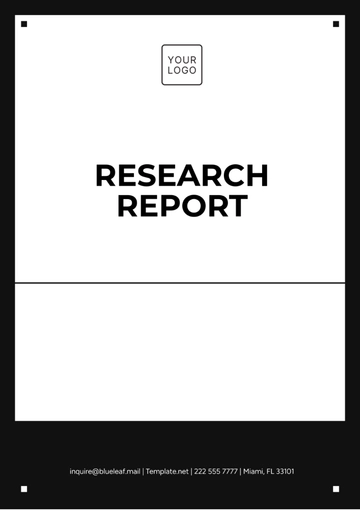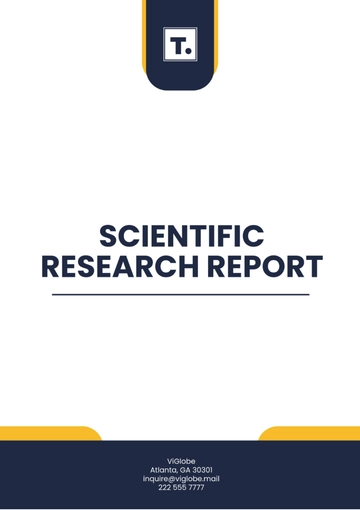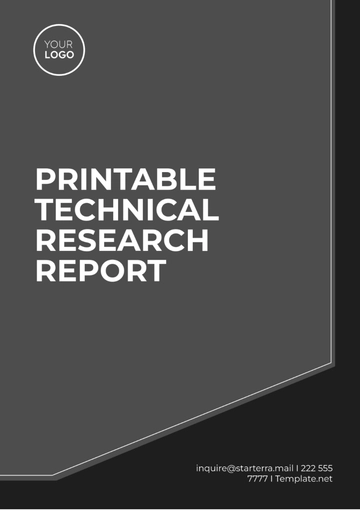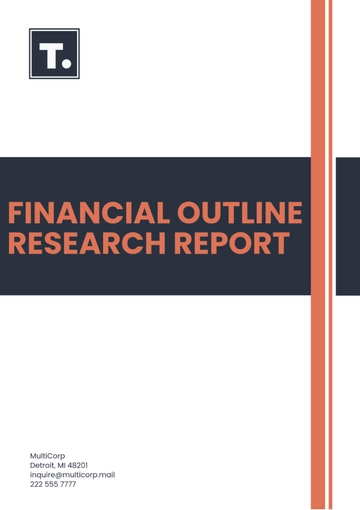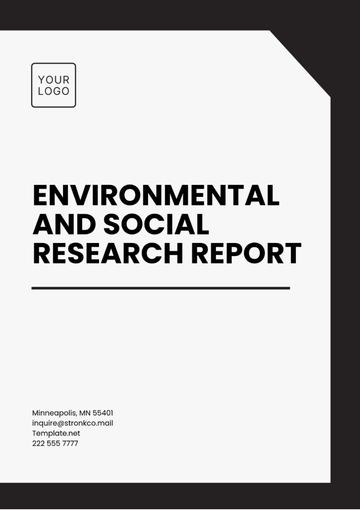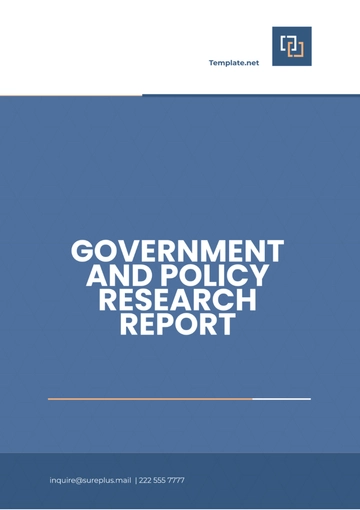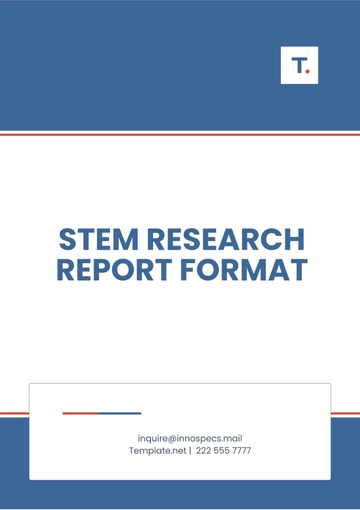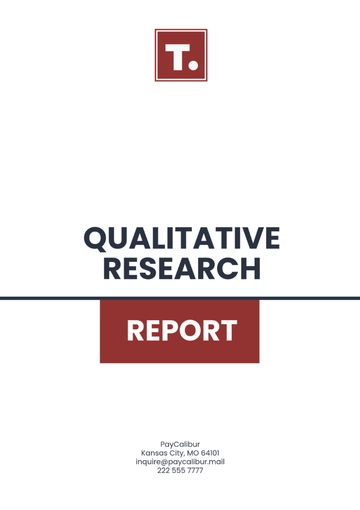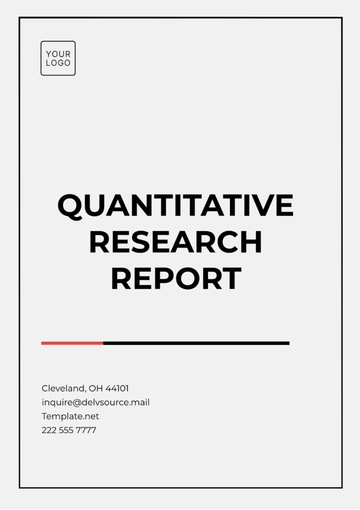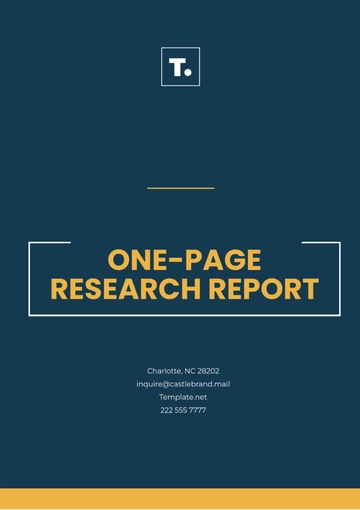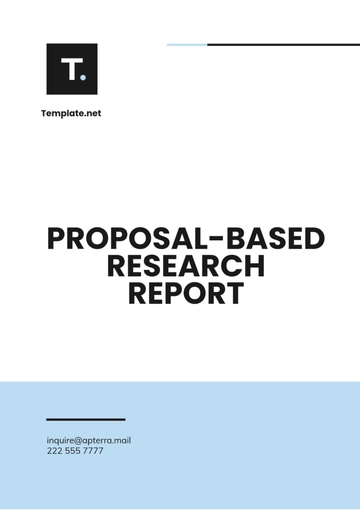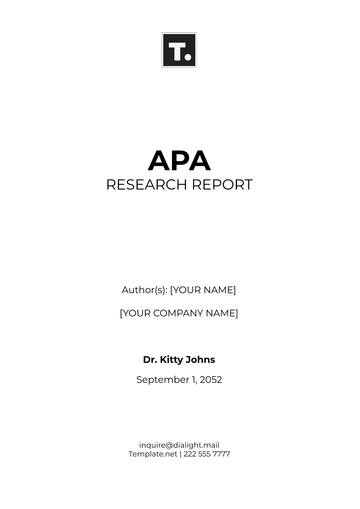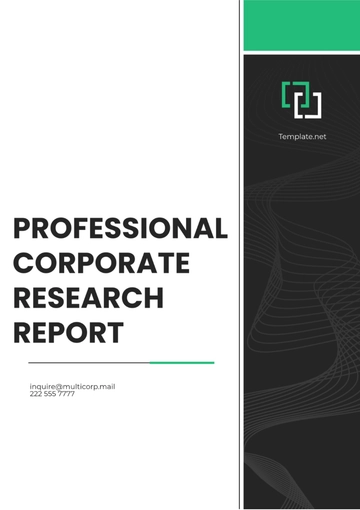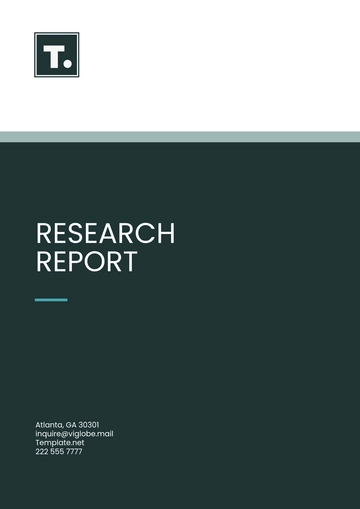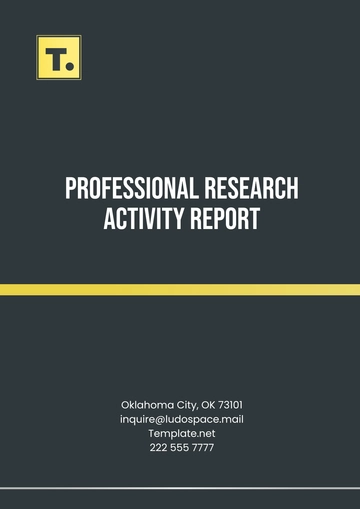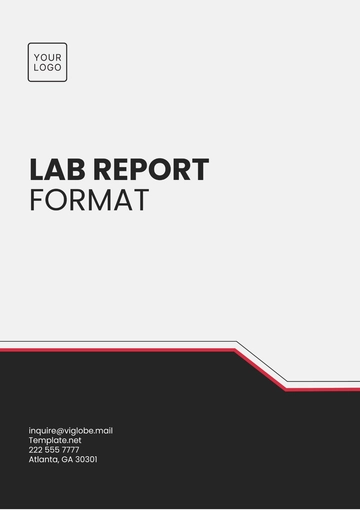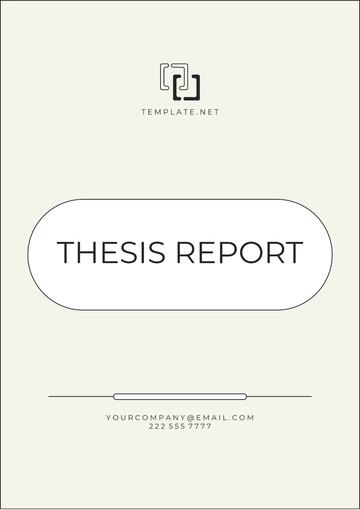Free Action Research Report

Author(s): [Your Name]
Institution: [Your Company Name]
Date: March 15, 2052
I. Executive Summary
This Action Research Report explores the effectiveness of various strategies implemented to improve employee productivity at [Your Company Name]. The study involves rigorous observation, data collection, and analysis of employee performance metrics over six months. By identifying factors contributing to decreased productivity and implementing corrective measures, this research aims to develop a sustainable action plan for future improvements.
II. Introduction
A. Background
In recent years, [Your Company Name] has experienced a dip in employee productivity. This research investigates the potential causes of this decline and evaluates corrective measures.
B. Objectives
The main objectives of this research are:
To identify the factors contributing to decreased productivity.
To implement and test strategies for improvement.
To develop a sustainable action plan based on findings.
III. Literature Review
Previous studies indicate that factors such as work environment, employee engagement, and managerial practices significantly affect productivity. Key literature reveals the following:
Work Environment: A conducive work environment, characterized by adequate resources, comfort, and safety, has been shown to enhance employee productivity. Studies by Smith (2050) and Johnson (2051) highlight the importance of physical and psychological comfort in the workplace.
Employee Engagement: Engaged employees are more productive, as demonstrated by the work of Clark (2050) and Green (2050). Engagement strategies, including recognition programs and career development opportunities, play a crucial role.
Managerial Practices: Effective managerial practices, including transparent communication, support, and leadership, positively impact productivity. Research by Brown (2050) and Lee (2050) underscores the influence of managerial behavior on employee performance.
IV. Methodology
A. Research Design
This action research employs both qualitative and quantitative methodologies, integrating surveys, focus groups, and performance data analysis. The mixed-method approach ensures comprehensive insights into employee productivity dynamics.
B. Data Collection
Data was collected through:
Surveys: Distributed to 100 employees across various departments to gauge job satisfaction, work environment, and managerial support.
Focus Groups: Conducted with 5 teams to gather qualitative insights and a deeper understanding of employee experiences.
Performance Metrics: Monthly performance data was collected to track productivity trends before and after implementing new strategies.
C. Data Analysis
Data was analyzed using a combination of statistical tools (such as SPSS) for quantitative data and thematic analysis for qualitative data. Statistical analysis identified trends and correlations, while thematic analysis provided insights into employee perceptions and experiences.
V. Findings
A. Survey Results
Survey results indicate varying levels of satisfaction across different categories:
Category | Percentage |
|---|---|
Job Satisfaction | 70% |
Work Environment | 80% |
Managerial Support | 65% |
B. Performance Metrics
Initial performance metrics show an upward trend in productivity following the introduction of new managerial practices. Specific improvements include a 15% increase in task completion rates and a 10% reduction in absenteeism.
VI. Discussion
Findings suggest that improvements in the work environment and increased managerial support correlate with enhanced employee productivity. Key points include:
Work Environment: Enhancements such as ergonomic workstations and flexible work arrangements contributed to increased comfort and productivity.
Managerial Support: Training programs for managers to improve communication and leadership skills resulted in better employee-manager relationships and increased motivation.
Employee Engagement: Programs focusing on employee recognition and career development significantly boosted morale and productivity.
VII. Conclusion and Recommendations
A. Conclusion
The study confirms that specific changes in managerial practices significantly impact employee productivity positively. Enhancements in the work environment and targeted employee engagement programs also contribute to improved performance.
B. Recommendations
Based on the findings, it is recommended that [Your Company Name]:
Continue to foster a supportive work environment by maintaining and improving ergonomic and flexible work arrangements.
Enhance employee engagement programs, including regular recognition and career development opportunities.
Regularly review and adapt managerial practices to ensure ongoing support and effective communication.
VIII. References
Smith, J. (2050). "The Impact of Work Environment on Employee Productivity." Journal of Workplace Psychology, 34(2), 123-135.
Johnson, M. (2051). "Creating a Conducive Work Environment." International Journal of Business Studies, 27(3), 45-58.
Clark, R. (2050). "Employee Engagement and Its Effects on Productivity." Human Resources Journal, 22(4), 78-89.
Green, L. (2050). "Strategies for Increasing Employee Engagement." Management Review, 15(1), 102-110.
Brown, A. (2050). "Managerial Practices and Employee Performance." Leadership Quarterly, 19(2), 234-247.
Lee, D. (2050). "The Role of Leadership in Employee Productivity." Organizational Behavior Journal, 31(1), 56-68.
IX. Appendices
Appendix A: Survey Questionnaire
Appendix B: Focus Group Discussion Guide
Appendix C: Performance Metrics Data
Appendix D: Statistical Analysis Output
- 100% Customizable, free editor
- Access 1 Million+ Templates, photo’s & graphics
- Download or share as a template
- Click and replace photos, graphics, text, backgrounds
- Resize, crop, AI write & more
- Access advanced editor
Template.net's Action Research Report Template empowers you to systematically solve problems and improve practices within your organization or educational setting. This template is fully customizable and editable in our AI Editor Tool, allowing you to document every step of your action research process, from planning and implementation to evaluation and reflection.
You may also like
- Sales Report
- Daily Report
- Project Report
- Business Report
- Weekly Report
- Incident Report
- Annual Report
- Report Layout
- Report Design
- Progress Report
- Marketing Report
- Company Report
- Monthly Report
- Audit Report
- Status Report
- School Report
- Reports Hr
- Management Report
- Project Status Report
- Handover Report
- Health And Safety Report
- Restaurant Report
- Construction Report
- Research Report
- Evaluation Report
- Investigation Report
- Employee Report
- Advertising Report
- Weekly Status Report
- Project Management Report
- Finance Report
- Service Report
- Technical Report
- Meeting Report
- Quarterly Report
- Inspection Report
- Medical Report
- Test Report
- Summary Report
- Inventory Report
- Valuation Report
- Operations Report
- Payroll Report
- Training Report
- Job Report
- Case Report
- Performance Report
- Board Report
- Internal Audit Report
- Student Report
- Monthly Management Report
- Small Business Report
- Accident Report
- Call Center Report
- Activity Report
- IT and Software Report
- Internship Report
- Visit Report
- Product Report
- Book Report
- Property Report
- Recruitment Report
- University Report
- Event Report
- SEO Report
- Conference Report
- Narrative Report
- Nursing Home Report
- Preschool Report
- Call Report
- Customer Report
- Employee Incident Report
- Accomplishment Report
- Social Media Report
- Work From Home Report
- Security Report
- Damage Report
- Quality Report
- Internal Report
- Nurse Report
- Real Estate Report
- Hotel Report
- Equipment Report
- Credit Report
- Field Report
- Non Profit Report
- Maintenance Report
- News Report
- Survey Report
- Executive Report
- Law Firm Report
- Advertising Agency Report
- Interior Design Report
- Travel Agency Report
- Stock Report
- Salon Report
- Bug Report
- Workplace Report
- Action Report
- Investor Report
- Cleaning Services Report
- Consulting Report
- Freelancer Report
- Site Visit Report
- Trip Report
- Classroom Observation Report
- Vehicle Report
- Final Report
- Software Report
